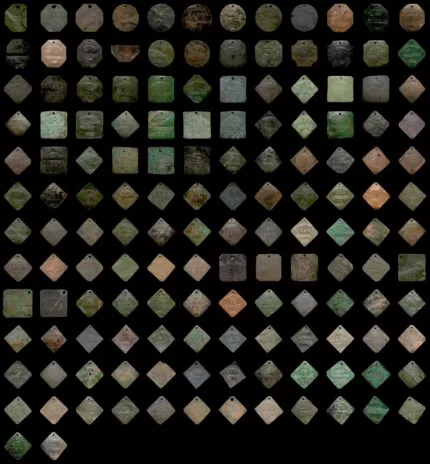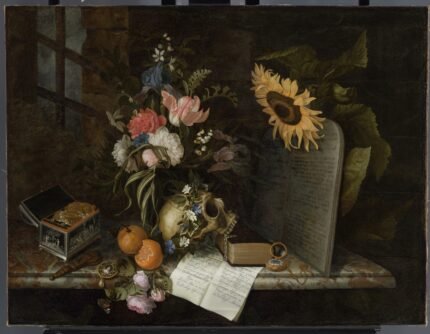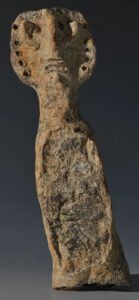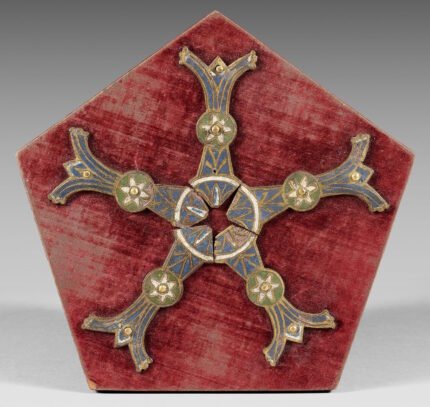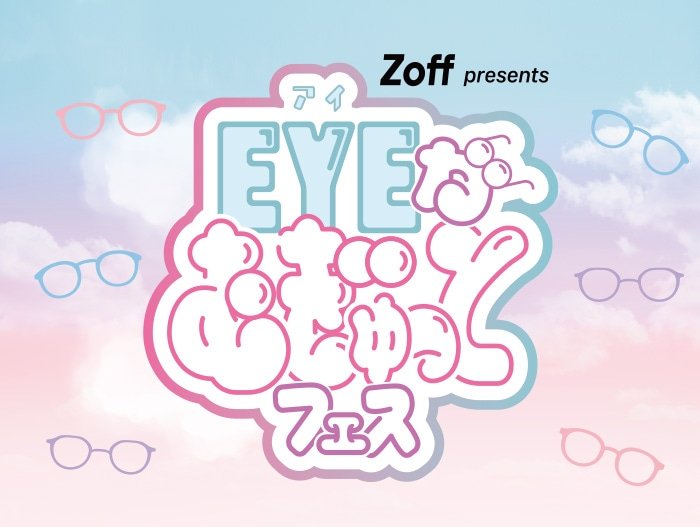The Smithsonian’s National Museum of African American History and Culture has acquired 146 rare Charleston Slave Badges, the largest and most complete set known. It contains one badge for every year between 1800 and 1865, and the only two badges known that were stamped with the name of the enslaved person.
Almost half of all the enslaved Africans shippped to North America landed in South Carolina ports, many of them destined to backbreaking labor on the lowcountry rice plantations. Charleston became one of the richest countries in the world by raking in immense profits from the trade in and use of slave labor.
Some Charleston enslavers looked to amplify their profits by leasing out their enslaved skilled tradesmen. Porters, carpenters, mechanics, fruiters, blacksmiths, masons and more were contracted to work for private individuals and in infrastructure projects for the city with all profits of course going to the enslavers. Established in 1783 to distinguish enslaved people from free Black people, the city instituted a badge system. The leased slaves wore badges stamped with the badge number, the city, “Charleston,” the laborer’s professional and the year. Free Blacks had to register their status and wear badges as well. All badges had to be sewn into their clothing, then renewed yearly by the city clerk.
The National Museum of African American History and Culture acquired the collection in 2022 from Harry S. Hutchins, Jr., who had spent 30 years amassing these rare objects into a uniquely tangible testament to the skills of enslaved people who literally built Charleston. To share the history of these individuals with the world, the museum has digitized the badges and created a Searchable Museum with high-definition photographs of the badges and explanations of their contexts and historical significance.
“We are honored to share the story of enslaved African Americans who contributed to building the nation,” said Mary Elliott, NMAAHC museum curator. “It is a story that involves the juxtaposition of profit and power versus the human cost. The story sheds light on human suffering and the power of the human spirit of skilled craftspeople who held onto their humanity and survived the system of slavery, leaving their mark on the landscape in more ways than one.”
Through this digital offering, visitors can engage with the objects and learn about the legislated system of leased enslaved labor in Charleston, South Carolina, those who profited from the system and how enslaved African Americans navigated the landscape of slavery using their abilities, skills and intellect. In addition to providing the history of Charleston Slave badges, the new Searchable Museum feature will provide insight into collecting, archaeology, the role of vocational training and the meaning of freedom.




 Anal Beads
Anal Beads Anal Vibrators
Anal Vibrators Butt Plugs
Butt Plugs Prostate Massagers
Prostate Massagers
 Alien Dildos
Alien Dildos Realistic Dildos
Realistic Dildos
 Kegel Exercisers & Balls
Kegel Exercisers & Balls Classic Vibrating Eggs
Classic Vibrating Eggs Remote Vibrating Eggs
Remote Vibrating Eggs Vibrating Bullets
Vibrating Bullets
 Bullet Vibrators
Bullet Vibrators Classic Vibrators
Classic Vibrators Clitoral Vibrators
Clitoral Vibrators G-Spot Vibrators
G-Spot Vibrators Massage Wand Vibrators
Massage Wand Vibrators Rabbit Vibrators
Rabbit Vibrators Remote Vibrators
Remote Vibrators
 Pocket Stroker & Pussy Masturbators
Pocket Stroker & Pussy Masturbators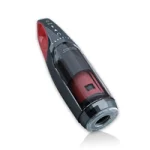 Vibrating Masturbators
Vibrating Masturbators
 Cock Rings
Cock Rings Penis Pumps
Penis Pumps
 Wearable Vibrators
Wearable Vibrators Blindfolds, Masks & Gags
Blindfolds, Masks & Gags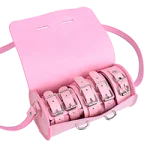 Bondage Kits
Bondage Kits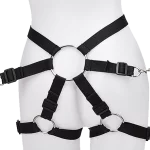 Bondage Wear & Fetish Clothing
Bondage Wear & Fetish Clothing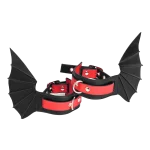 Restraints & Handcuffs
Restraints & Handcuffs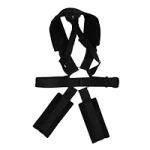 Sex Swings
Sex Swings Ticklers, Paddles & Whips
Ticklers, Paddles & Whips






